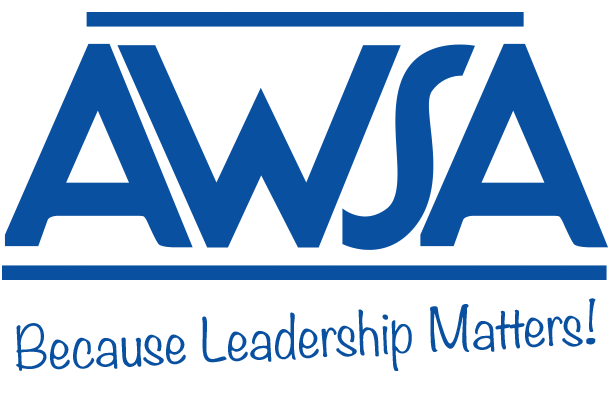December 4th EditionRelational Readiness: The Four Must-Have Skills to Build Meaningful Relationshipsby Adam Sáenz, Ph.D. We—humanity—are like a massive collection of Legos. Our individual pieces of human experience vary in size, shape and color, but all were designed and evolved specifically to connect one with another. When we connect with the right people the right way, we become a part of a narrative or unfolding story that gives us deeper meaning and purpose, both individually and collectively. That holds true universally—across cultures, across sexes, across generations, and across ideologies. It certainly holds true in schools. Why should educators be concerned when a child lacks the capacity to initiate and sustain age-appropriate, inter-independent relationships? It is because relationships are resources (American Psychological Association, 2013). Many would go so far as to argue that relationships are our most important resource—in the end, far more valuable to us than money, education, or physical ability. Children who lack the capacity to appropriately access relationships as resources (and do not receive appropriate intervention), then, will grow up to be adults that are even more deeply isolated and impaired—damaging, even—as they relate with other human beings, children and adults alike. In effect, those children become Lego pieces that molded out of their ability to integrate with other Lego pieces. “What jobs-to-be-done are you hiring for? Wondering about solutions for post high school readiness? Us too…”: One Story and Path to Adding Value for Our Local Graduatesby Erik L. Hanson, Dean of Digital Learning, Appleton Area School District Change has been a big word used in the education space for quite some time now. Within all of the noise of change, one theme tends to stay constant: “Buzz words”. In education, even when I was a high school student myself, I can remember teachers talking about the latest acronym or the newest shiny word. Today, they are equally alive and well; however, with technology at our fingertips, buzz words appear to rise and fall at a new expedited pace. As the Dean of Digital Learning for the Appleton Area School District (AASD), one of my roles is to lead the Appleton eSchool’s online learning programming for our district. Our primary focus has historically been and continues to be to serve students who are attending a brick and mortar school. Over 90% of our students who take classes online with us are attending a physical school as their primary school. We are seeing a growing demand for students with “blended schedules”. Empowering Students To Create, Collaborate, and Communicateby Christina Nording, 5th Grade Teacher, School District of Milton “School is boring!” “All we do is take tests.” “We don’t do anything fun!” Have you heard these words out of the mouths of your students? Before I continue, I realize not every lesson design is going to have bells and whistles, but what might happen if we put the power of allowing students to create, collaborate and communicate into their hands? Would less cheating and more learning take place in the classroom environment? Let’s face it, learning is not an isolated process, but a collaborative one. As an educator, my best lessons and projects are often sparked through discussions with other educators. December 21st EditionCoherence: The Right Drivers in Action for High Impactby Joe Schroeder, Ph.D., Associate Executive Director, AWSA When first published in 2011, Michael Fullan’s policy paper titled “Choosing the Wrong Drivers for Whole System Reforms” struck a deep chord because he described so eloquently and powerfully what so many of us in the field were coming to understand: that much/most of major US educational policy was founded on “the wrong drivers” and thus would ultimately not realize its aims. As delineated in the paper, the four wrong drivers were external accountability, individualism, technology acquisition, and ad hoc policies. The four right drivers were capacity building with a focus on results, collaboration, pedagogy, and systemness (i.e., coordinated policies). Although a very influential read at the time, Fullan, by his own admission, conceded that “the ‘drivers paper’ was not a plan of action.” But now fast forward five years and note that his recently co-authored work with Joanne Quinn, Coherence: The Right Drivers in Action for Schools, Districts, and Systems (2016) does build on the “drivers policy paper” -- laying out a pathway of action forward for those leaders committed to high impact on the staff and students who they lead and serve. AWSA Joins As AMICUS In Supreme Court's Review of Open Meetings Caseby Malina Piontek, Attorney, LLC In light of the very real impact that a ruling by the Wisconsin Supreme overturning the Court of Appeals decision in Krueger v. Appleton School Districtwould haveon AWSA’s members,AWSA has joined with several other groups as an amicus in support of the Appleton Area School District (AASD). A motion for leave to file an amicus brief was filed on behalf of the amici on December 14, 2016, and was immediately granted. The amicus brief is due December 28, 2016, and it is expected that the Supreme Court will hear oral arguments on the case on February 15, 2017. The two specific issues to be decided by the Supreme Court are: 1) whether a formal committee, created by school district officials, pursuant to school district policies, in order to carry out school district functions, is a “governmental body” subject to the open meetings law; (Wis. Stat. § 19.82(1)) and 2) whether, if the committee is a “governmental body,” it met in violation of the open meetings law. |
